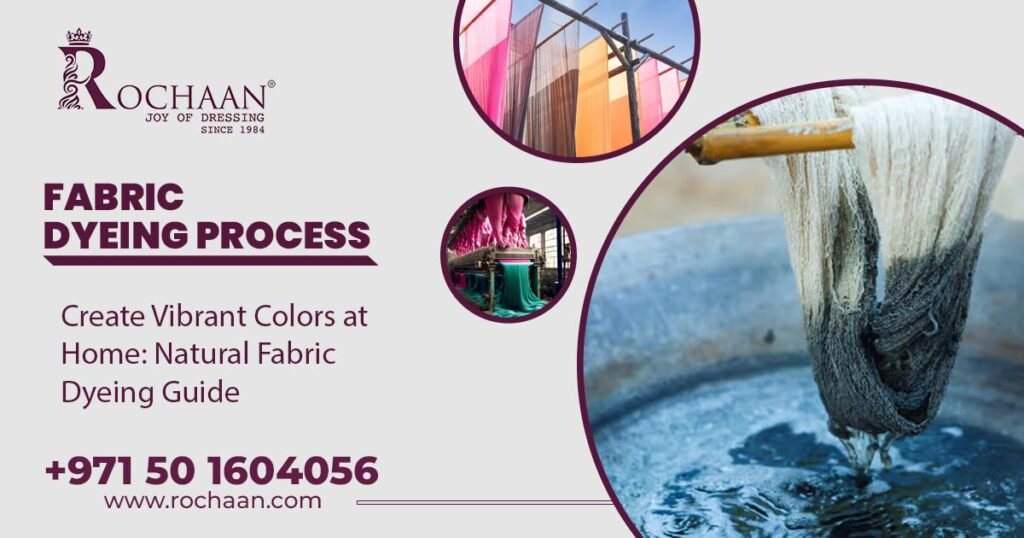Natural fabric dyeing is a time-honored tradition that utilizes plant, mineral, and animal sources to create vibrant colors for textiles. This sustainable approach not only respects the environment but also adds unique characteristics to fabrics. As the demand for eco-friendly practices grows, understanding natural dyeing techniques becomes increasingly important for artisans, designers, and hobbyists alike. In this guide, we will explore the benefits, materials, techniques, and tips for successful natural fabric dyeing.
The Benefits of Natural Fabric Dyeing
1. Eco-Friendly
Natural dyes are derived from renewable resources, making them a sustainable alternative to synthetic dyes. By using plant-based materials, you can reduce your carbon footprint and contribute to a healthier planet.
2. Non-Toxic
Many synthetic dyes contain harmful chemicals that can cause skin irritations and environmental damage. Natural dyes are generally non-toxic and safer for both the dyer and the environment.
3. Unique Colors and Textures
Natural dyes produce unique colors that often vary with the fabric, dyeing method, and even the season. This variability can create a one-of-a-kind textile that is distinct and personal.
4. Historical and Cultural Significance
Natural dyeing has been practiced for centuries across various cultures. By using natural dyes, you connect with a rich history of textile traditions and craftsmanship.
5. Sustainability and Reduced Waste
Using natural dyeing methods can help reduce waste by utilizing materials that would otherwise be discarded, such as food scraps or garden plants.
Materials Used in Natural Dyeing
1. Plant Sources
- Leaves and Flowers: Many plants, including marigolds, hibiscus, and indigo, produce vibrant dyes from their leaves and flowers.
- Roots and Bark: Roots like madder and turmeric, as well as barks from trees like walnut, are excellent for dyeing.
- Seeds and Nuts: Some seeds and nuts, such as acorns and sumac, can also yield dyes.
2. Animal Sources
- Insects: Cochineal bugs are used to produce carmine, a brilliant red dye.
- Wool and Silk: Natural fibers like wool and silk can absorb dyes well, resulting in vibrant colors.
3. Minerals
- Metal Salts: Certain minerals, such as alum, can be used as mordants to fix dyes on fabric and enhance their color.
The Dyeing Process
1. Preparing the Fabric
Before dyeing, it’s essential to prepare the fabric properly:
- Washing: Clean the fabric to remove any impurities or finishes that may inhibit dye absorption.
- Mordanting: Use mordants to help the dye adhere to the fabric. Common mordants include alum, iron, and cream of tartar.
2. Extracting the Dye
To extract dye from natural sources:
- Simmering: Place the plant material in water and simmer to release the color.
- Straining: After simmering for an appropriate amount of time, strain the liquid to remove the plant material, leaving only the dye solution.
3. Dyeing the Fabric
- Dye Bath: Submerge the prepared fabric in the dye bath, ensuring it is fully saturated.
- Soaking Time: Allow the fabric to soak for a specific period, usually ranging from 30 minutes to several hours, depending on the desired intensity of color.
4. Rinsing and Drying
Once the fabric has reached the desired color:
- Rinsing: Rinse the fabric under cool water to remove excess dye.
- Drying: Hang the fabric to dry in a shaded area to prevent fading from sunlight.
Techniques for Natural Dyeing
1. Bundle Dyeing
This technique involves wrapping plant materials around the fabric and steaming or boiling it to transfer color. It creates beautiful patterns and designs.
2. Shibori
Shibori is a Japanese resist-dyeing technique that involves folding, twisting, or bunching the fabric to create unique patterns before dyeing.
3. Tie-Dye
Tie-dyeing is a fun and straightforward method where sections of fabric are tied tightly to create patterns before dyeing, resulting in vibrant colors and designs.
4. Solar Dyeing
In solar dyeing, plant materials and fabric are placed in jars filled with water and left in the sun. The heat helps extract the dye naturally over time.
Tips for Successful Natural Dyeing
- Experiment with Different Materials: Each plant material can yield different colors and shades, so don’t hesitate to experiment.
- Keep a Dye Journal: Document your dyeing process, including the materials used, the dyeing method, and the resulting colors. This will help you replicate successful results in the future.
- Use High-Quality Fabric: Natural fibers such as cotton, silk, and wool absorb natural dyes better than synthetic fibers.
- Test Swatches: Before dyeing larger pieces, test small swatches to see how the color develops.
- Consider Seasonal Variability: The availability and potency of plant materials may vary by season, affecting the color outcome.
Conclusion
Natural fabric dyeing is a rewarding and creative process that allows you to produce beautiful, unique textiles while minimizing environmental impact. By utilizing sustainable materials and techniques, you not only enhance your craft but also contribute to a greener planet. With this comprehensive guide, you can confidently explore the world of natural dyeing, from understanding materials to mastering various techniques. Whether you’re a seasoned dyer or a beginner, the possibilities are endless as you create stunning pieces that reflect your personal style and connection to nature.



More Stories
Top Reasons to Rent a Jumping Castle for Your Next UAE Event
Understand Angel Number:A Guide for Meaning
Why the Green Bay Packers Letterman Jacket is the Perfect Blend of Team Spirit and Style